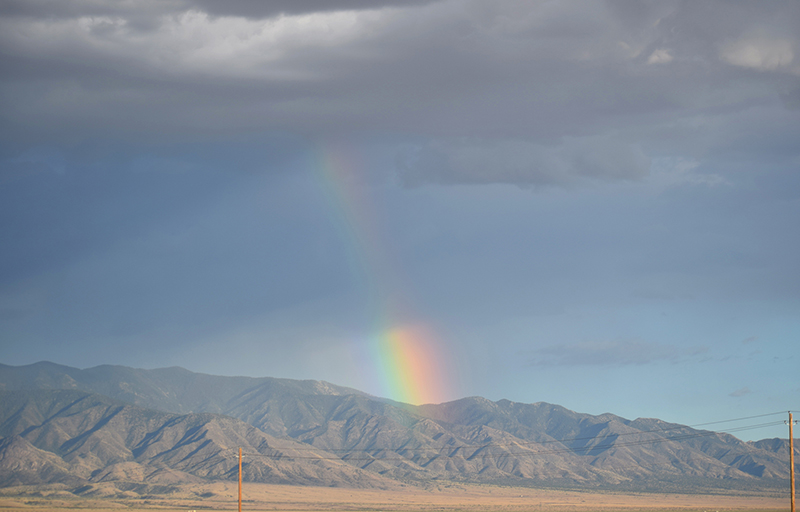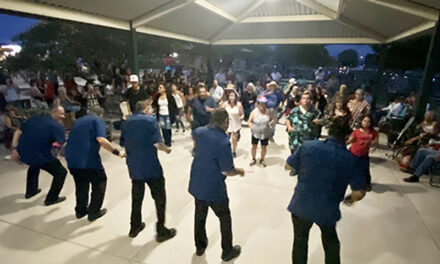In the year 1,650 AD, Bishop Ussher in Ireland calculated from literal counting of days and years in the Bible that the Earth was formed on the evening before Oct. 23, 4004, BC, which would make the Earth a little more than 6,000 years old.
So, for all of you who were born on Oct. 23, you may have something in common with Mother Earth. But, to quote the Gershwin tune, “It ain’t necessarily so.” We now know the Earth to be 4.5 billion years old.

Mike Powers | News-Bulletin photo
In early geologic investigations, only the relative age of rocks (younger vs. older rocks) could be ascertained. As rocks are deposited, the relative age of rocks would indicate that upper rocks are younger than deeper rocks. This mostly holds true, but not always. Tectonic forces may overturn some layers. Also, lavas may flow down into canyons, reaching elevations lower than older rocks in the surrounding canyon walls.
Rock layers can also be dated by the fossils they contain: older layers contain more primitive fossils than younger rocks with more advanced life forms.
In the 20th century, geochemical methods of rock dating started to produce absolute (vs. relative) ages. Many methods now exist that apply to specific types of rocks and to a wide range of rock ages.
The oldest Valencia County rocks, the granitic rocks forming the base of the Manzano Mountains, as shown above in the beautiful photo taken by Mike Powers, have been dated at about 1.5 billion years old by measuring concentrations of uranium and lead (a uranium-derived metal) method. The sedimentary rocks that cap the Manzanos are dated as about 300 million years old by its fossils, when compared to other known formations. The sediments that make up the very thick section of rift-filling materials found in the Rio Grande Valley have been dated by chemical dating of volcanic rocks that are interlayered in the sediments.
For example, the volcanic rocks at Geology Landscapes of Valencia County in the western part of the county and Tomé Hill were dated at 8 to 3 million years. Travertine rock in the western part of the county is the youngest rock, still being formed in CO2-rich water springs in the western part of the county.
(Paul Parmentier, a certified professional geologist retired from California and living in Los Lunas, shares the rich geologic features in Valencia County. He earned a Bachelor of Science degree in geology from Belgium and a master’s degree in geochemistry from Japan. The Geology Landscapes of Valencia County are featured monthly.)
















